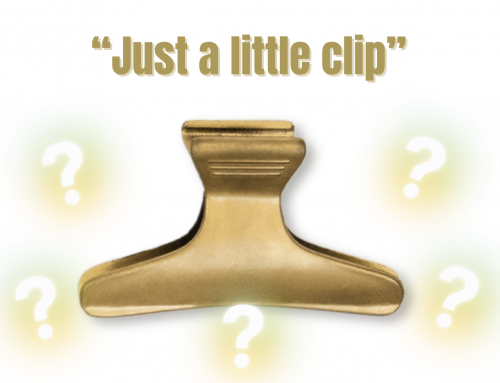From Childhood To Birth Keeping; Understanding Our Past to Empower Modern Birth Practices: A Deep Dive into Personal Growth and Birth Keeper Dynamics
The realm of birth work is as intimate as it is profound. As birth keepers, we stand witness to some of the most transformative moments in a woman’s life. Yet, amidst the closeness and deep-rooted connection, lies the potential danger of blurred boundaries. The line between being a professional and a friend can quickly become murky, affecting both our efficacy as birth keepers and our personal well-being.
Synchronicities and Sacred Lessons: Embracing Growth in the Birth Keeping World
Recently, I found myself deeply immersed in conversations with a couple of my remarkable students. These passionate individuals shared their challenges concerning conflict and setting boundaries in their work. Their heartfelt accounts resonated with me, underscoring an often-unaddressed aspect of our sacred calling: the intricate dance of emotions, personal connections, and professionalism.
Coincidentally, around the same time, I was gifted a transformative book titled ‘A Radical Awakening’ by Dr. Shefali. This generous gesture came from my dear friend and light worker, Jaclyn Dunne. In the tapestry of my journey, Jaclyn was one beacon of strength and inspiration who remains undeniably radiant: It was her unwavering belief and encouragement that fueled my drive to introduce the birth movement and organisation, When Push Comes To Shove, to the world. Jaclyn is not just another voice; she is a profound emblem of integrity and wisdom within the freedom movement. Her audacity to shine brilliantly, even amidst the harshest criticisms and overwhelming darkness, is a testament to her indomitable spirit. She exemplifies the essence of pursuing one’s calling without being swayed by external judgments. For her ceaseless support and for being a lighthouse in moments of doubt, I extend my deepest gratitude. From the core of my being, thank you, Jaclyn.
Delving into the pages of this book, I was captivated by the profound insights Dr. Shefali offered on women’s journeys of self-discovery, ego, and societal conditioning. It felt as if the universe had conspired to put this book in my hands precisely when I needed it most.
‘A Radical Awakening’ didn’t just offer enlightenment—it served as a mirror. It made me reflect on the common struggles faced by many in the birth world. Considering the intimate nature of our work, it’s no surprise that many birth keepers grapple with blurred boundaries. But how do we navigate these murky waters, honouring both our professional responsibilities and personal emotions?
Compelled by these reflections and the candid accounts of my students, I felt an earnest desire to pen down this blog. My hope is to shed light on the significance of boundaries in our sacred profession and provide some guidance on balancing our emotional and professional selves.
The Professional and Personal: An Ongoing Tug-of-War
To illustrate, imagine this scenario: a client, with whom you’ve fostered a close bond during the birth journey, requests you to care for their newborn for a few hours to have some alone time. A simple request, it may seem, but it’s laden with complexities. Are you providing a service as part of your postnatal package, or is this more of a favour between friends? Would it be considered babysitting?
It’s clear that while the path of birth keeping brings professionals close to their clients, drawing distinct lines is paramount. This doesn’t mean erecting walls but rather creating clear boundaries that protect both the birth keeper and the client.
Conflicts: When the Personal and Professional Clash
The complications of these intertwined relationships become even more evident when disagreements or conflicts arise. For many women, societal conditioning has ingrained the idea of always being ‘nice’. This has deep historical roots tied to notions of femininity, where women are conditioned to be agreeable, often sidelining their own needs or opinions.
Society’s expectations come with a heavy burden, and many women bear the emotional scars or what’s known as the mother wound. Under these layers, when faced with conflict, there’s a propensity to react impulsively, driven by deep-seated emotions rather than reasoned thought.
However, in the professional realm, and especially in a field as sensitive as birth keeping, reactionary behaviour can jeopardise one’s standing. Effective conflict resolution requires a deft touch, setting aside personal feelings and ego. This is especially challenging when clients, sensing the blurred lines between personal and professional, may take disagreements to a personal level.
Adopting a balanced stance, devoid of emotional reactions, is pivotal. It aids in ensuring clients never feel that they are under attack. Solution-oriented phrases, like “we WILL find a solution”, communicate a collaborative approach rather than a combative one.
Our approach to resolving disputes isn’t solely rooted in our training or immediate experiences; it’s intricately tied to deeper psychological patterns that have shaped us over the years. Dr. Shefali’s exploration of egoic archetypes in ‘A Radical Awakening’ offers a profound understanding of this connection. These archetypes, formed in the crucible of our childhood, significantly influence how we navigate conflicts, set boundaries, and interact in our professional roles. By delving into these archetypes and their origins, we can gain clarity on our reactions, empowering us to approach challenges with greater self-awareness and empathy.
The Role of Ego and Dr. Shefali’s Profound Insights
Understanding one’s ego is crucial in this journey. Dr. Shefali, a renowned clinical psychologist, provides illuminating insights into how our ego manifests in various archetypes. These personas, developed as defence mechanisms, are often the outcome of unconscious parenting and societal impositions.
Dr Shefali describes three main egoic archetypes; The Givers, The Controllers & The Takers.
I have outlined these archetypes below with sub categories and how they might present in birth workers. If you find yourself feeling triggered by this topic, consider it a blessing in disguise. Such emotional responses often serve as signposts, pointing us toward areas of our lives that warrant deeper introspection and understanding. Embracing these feelings can propel you further on your journey of self-development—both personally and as a professional in the birth world. Remember, every moment of self-awareness is a step forward in refining your practice and deepening your connection with those you serve.

The Givers and Their Manifestations in Birth Keeping:
1. The Victim:
- General Traits: This archetype perceives themselves as continuously being wronged or sidelined. They often feel overshadowed by others and harbour a sentiment of not being appreciated or recognised for their worth.
- In Birth Keeping: A birth keeper might feel overshadowed by medical professionals or undervalued by clients. They may find themselves silently resenting but not addressing these feelings
2. The Martyr
- General Traits: The Martyr selflessly sacrifices their needs and desires for the well-being of others. While their giving nature is commendable, it often comes at the expense of their well-being, leading to feelings of resentment over time.
- In Birth Keeping: The Martyr might overextend themselves, offering additional hours or services without compensation, putting their health or personal life at risk.
3. The Saviour
- General Traits: Embodied by individuals who believe they have the power or duty to ‘save’ or rescue others. They often feel a compulsion to step in and take control, sometimes even when it’s not asked of them.
- In Birth Keeping: Such a birth keeper may try to dominate birthing decisions, believing they know best, potentially sidelining a mother’s wishes.
4. The Bleeding Empath
- General Traits: This archetype is characterised by an intense sensitivity to the emotions of others. They absorb and internalise others’ feelings to such an extent that it often clouds their judgement and compromises their well-being.
- In Birth Keeping: Overwhelmed by the emotional waves in the birthing space, they may struggle to maintain professional detachment, potentially compromising their decision-making.
Each of these Giver archetypes, while seemingly altruistic, can become problematic if unchecked. They often arise from deep-seated beliefs or past experiences that influence current behaviours and interactions. Recognising and understanding these archetypes can pave the way for personal growth and more balanced interactions.

The Controllers and Their Implications in Birth Work:
- The Perfectionist:
- General Traits: This archetype thrives on order, precision, and impeccable standards. While their attention to detail can be a strength, it can also lead to unrealistic expectations, resulting in disappointment or undue stress on themselves and others.
- In Birth Keeping: Strives for a “perfect birth” scenario, which can lead to disappointment or feelings of failure if anything goes awry.
2. The Helicopter
- General Traits: Often seen hovering closely, the Helicopter is characterised by their overbearing presence. Whether it’s out of concern or the need to manage every detail, they can inadvertently stifle others’ independence or growth.
- In Birth Keeping: Could become overbearing, monitoring every aspect of the birth, potentially causing anxiety or discomfort to the mother.
3. The Tyrant
- General Traits: Driven by a need for dominance, the Tyrant often asserts their will forcefully. They have a strong desire for control and may clash with others who challenge their authority.
- In Birth Keeping: This birth keeper might clash with other professionals, insisting on their methods or opinions above all else.
4. The Shield
- General Traits: Motivated by protection, the Shield is always on guard. They are wary of external influences or interventions, which can sometimes lead them to be overly defensive or resistant to beneficial changes.
- In Birth Keeping: They might be excessively wary of any external interventions or suggestions, seeing them as threats to their domain.
These Controller archetypes underscore various mechanisms by which individuals may seek to establish control or order in their environments. However, when unchecked, they can become sources of conflict or hinder collaborative efforts. Acknowledging and understanding these patterns can be the first step in fostering more harmonious interactions and personal growth.

The Taker Ego in Birth Keeping Context:
- The Diva:
- General Traits: The Diva seeks the spotlight and wishes to be the centre of attention. They prioritise their narratives and desires over others, often overshadowing or dismissing the feelings and needs of those around them.
- In Birth Keeping: They might prioritise their experiences or narratives over the birthing mother, seeking praise for every action.
2. The Princess
- General Traits: Driven by a desire for adoration and validation, the Princess expects constant appreciation. They believe they are deserving of special treatment and can feel slighted or neglected without regular acknowledgment.
- In Birth Keeping: Could expect constant gratitude or validation, feeling slighted if not regularly appreciated.
3. The Child
- General Traits: The Child embodies a reluctance or refusal to grow up or take responsibility. They often lean heavily on others, expecting them to cater to their needs, and can be quick to attribute their issues or failures to external factors, avoiding self-accountability.
- In Birth Keeping: They may avoid taking responsibility for any hiccups, attributing them to external factors and not owning up to their decisions.
While “The Takers” might seem overtly self-centred at first glance, it’s essential to understand that these behaviours often stem from unmet needs or past traumas. Recognising these archetypes in oneself or others is not an invitation for judgement, but rather an opportunity for understanding and growth. By identifying and addressing the root causes of these patterns, individuals can foster healthier relationships and more balanced personal dynamics.
While identifying and understanding these egoic archetypes is valuable, it becomes even more enlightening when we delve into the root causes of their emergence. Below are hypothetical childhood scenarios that offer insights into the shaping of our defensive armours and the nuances of their manifestations.
The Givers
The Victim:
Scenario: Emily frequently feels overshadowed by her talented older sibling. At school events or family gatherings, attention naturally gravitates towards her sibling’s achievements. Emily internalises this dynamic, feeling that she’s always second-best or unnoticed.
The Martyr:
Scenario: Growing up, Lola noticed that her single mother was always stressed. She’d voluntarily forego school trips or events to avoid adding financial or emotional stress to her mum. Over time, she began associating personal sacrifice with love and care.
The Saviour:
Scenario: Sarah was the oldest among her siblings. Whenever there was a dispute or a problem, she’d step in to mediate or find a solution. This responsibility made her believe it was her role to fix problems for everyone.
The Bleeding Empath:
Scenario: As a child, Mia was incredibly sensitive to her parents’ moods. She could sense tension and would internalise their feelings, often believing she had to absorb their emotions to maintain peace at home.
The Controllers
The Perfectionist:
Scenario: Fatima grew up in a household where grades and achievements were heavily emphasised. Any grade less than perfect was questioned, leading her to develop an obsession with perfection in everything she did.
The Helicopter:
Scenario: During her early school years, Zoe’s parents would constantly oversee her homework, often correcting it before submission. This made her believe that she always needed to be in control and closely monitor everything.
The Tyrant:
Scenario: Laura was the strongest kid in her neighbourhood ( a tomboy) and would often get her way in games or disputes. This early dominance led her to believe that control was acquired through sheer force or will.
The Shield:
Scenario: Growing up, Ava witnessed frequent arguments between her parents. She learned to be on guard, developing a defence mechanism to shield herself from potential emotional harm.
The Takers
The Diva:
Scenario: Lily was the apple of her parents’ eye. They celebrated her smallest achievements and constantly showcased them to friends and family. She grew up believing she deserved such attention at all times.
The Princess:
Scenario: Sophia’s family treated her as the jewel of the household. She received gifts without asking and was seldom denied any requests. This upbringing made her feel entitled to special treatment.
The Child:
Scenario: Maxine rarely faced consequences for her actions at home. Whenever she made a mistake, her parents would handle it for her, leading her to believe that she didn’t need to take responsibility.
These scenarios, although hypothetical, provide a glimpse into how childhood experiences and dynamics can sow the seeds for the Givers, Controllers, and Takers archetypes that manifest in adulthood.
Embracing Transformation for Effective Birth Keeping
Recognising and understanding these archetypes isn’t about judgement but about awareness. As birth keepers, it’s paramount to be self-reflective, identifying when these personas might emerge, and actively working to balance or curb them.
These ego-driven responses, moulded by societal pressures and personal traumas, can become obstacles in the path of a birth keeper. However, by acknowledging them and committing to continuous personal growth, birth keepers can ensure they serve from a place of genuine care, expertise, and compassion.
In essence, the journey of a birth keeper isn’t just about aiding in the miracle of birth but also about personal evolution, ensuring they remain effective, empathetic, and enlightened in their role. As with birthing, the process might be painful at times, but the result is transformative and awe-inspiring.
Awakening from the Ego: The Path Forward
For birth keepers, moving past these ego-driven responses is essential. Continuous introspection and inner work are required. It’s about confronting and healing from the traumas and conditioning that created these defence mechanisms in the first place.
In the realm of birth, where emotions run high, and the stakes are immense, birth keepers must be both skilled professionals and emotionally balanced individuals. They must serve without letting personal traumas and ego-driven behaviours overshadow their duty.
In conclusion, for birth keepers to truly shine in their roles and serve their clients effectively, the dance between personal emotion and professional conduct must be navigated with grace, empathy, and self-awareness. This journey is not just about being effective professionals, but it’s also about personal growth, healing, and evolution.
Aligning with Authenticity: Navigating Actions with Self-Awareness
There’s a profound clarity that emerges when one reflects upon their past, and in my introspection, I unmistakably identified with several egoic archetypes, most notably ‘The Saviour’. My history is sprinkled with instances where I inadvertently invited victims into my life, a testament to the strength of this archetype within me. Parallel to this, I resonate deeply with ‘The Victim’ archetype. It’s evident in the numerous challenges I faced, from moments of feeling gaslighted to those despairing instances when my voice, tinged with beliefs perceived as ‘hippy’, was drowned out in the birth world, merely because I lacked traditional credentials. Admitting this isn’t a sign of weakness; rather, it’s an acknowledgment of my journey towards self-awareness. I’m immensely grateful for life’s repetitive nudges, pushing me to align with my true essence and unearth my authentic self. And while there will be times when we might momentarily revert to old habits, armed with this self-knowledge, we possess a powerful compass to guide us back to our genuine path.
In understanding the tapestry of our egoic archetypes and their childhood origins, we are gifted with an invaluable tool: the ability to recognise when we are acting from a space of past conditioning rather than our true essence. Each decision, each interaction, and even each social media post can be an opportunity to practise self-awareness.
Before we press ‘send’ on that next tweet or Instagram post, let’s pause and reflect: Where is this coming from? Is it an impulsive reaction from a place of fear, perhaps from an old wound or an archetype trying to protect itself? Or is it an authentic response, genuinely reflective of our values and who we have grown to be?
In the birth keeping world, where we interact with diverse individuals at pivotal moments in their lives, our authenticity and alignment with our true nature aren’t just personal choices—they are responsibilities. When our actions emerge from love and genuine self-awareness, they not only resonate more deeply with others but also provide us with a greater sense of fulfilment.
Challenging as it may seem, there is immense power in consistently checking in with ourselves. By asking, “Is this truly me?”, we embark on a continuous journey of aligning closer with our authentic selves. This not only enriches our personal lives but also elevates our professional practice, allowing us to serve others from a place of genuine understanding and compassion.
Artemis Birth Attendant Academy: Your Journey to Conscious Birth Keeping Begins Here
Are you drawn to the sacred act of birth and yearn for an education deeply rooted in spirituality and self-development? At Artemis Birth Attendant Academy, we believe that by healing the world one birth at a time, we can usher in a global shift in consciousness. Our one-year Birth Keeper course isn’t just a program; it’s a transformative journey.
If the conventional, over-medicalised approach to midwifery doesn’t resonate with you, and you seek a non-clinical, holistic alternative, then you’re in the right place. Here, we prioritise the spiritual and emotional facets of birth, recognising its profound impact on both the child and the mother.
You don’t need prior experience in the field, just a heart ready to embrace, an open mind, and a burning desire to make a difference. Our course equips you with the tools and knowledge to deeply influence and improve the birthing experiences of countless women, creating ripples that reverberate through communities.
Join us in our mission to heal, transform, and elevate the sacred act of birth. At Artemis Birth Attendant Academy, you aren’t just trained; you’re awakened.






